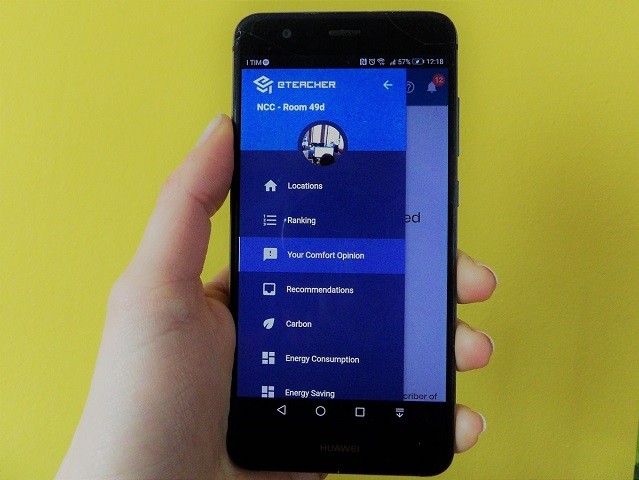Hints and recommendations regarding Digital Tools for Sustainable and Efficient Energy Behavioural Change
February 2nd - Forming attitudes is hard. It may be exciting to start a new habit, but it’s challenging to make it stick. And this is what eTEACHER is about, a project to change the long-term energy behaviour of end-users in different buildings. But the strength of this project lies in the unique twofold combination: a sophisticated brain, which gathers information on end-users’ energy behaviour and needs, processes data and provides customised recommendations; and the end-users’ involvement, which has guided our technical work throughout. Over the last four months, users were asked to test the app and give their final feedback before it goes on the market. However, the app was released later than planned due to various technical issues and the global pandemic, which complicated the testing and monitoring in the demo building. Let’s try to provide some advice about getting people to change their energy habits, based on the experience of the eTEACHER team. Why is user engagement so important for changing behaviour apps, like eTEACHER? Because if we want to get building users to download and try our app, we must first inform them about the project and energy issues. And once they’ve downloaded the app, they are kept on board by both the project’s engagement strategy and the app’s user-friendly features (mobile app and desktop version). Which were the main challenges you tackled in user engagement? There were several challenges. The main one was the wide range of user profiles: students, teachers, office staff, doctors, flat occupants, cleaning staff, patients, etc. Building users were of different ages with educational and cultural backgrounds. Feedback from all these people has been used in our solutions to make them more successful with building users. Since the global pandemic started, we haven’t been able to obtain this feedback in person at forums, interviews or workshops. Attracting their attention and collecting their feedback is now much harder. How did you engage with them and which conclusions can you draw? As a solution, we are continuously tracking users’ statistics, which show exactly how building users are using the tool. We constantly update our engagement plans in the light of these statistics. This engagement involves using calls and digital media such as emails, appealing videos, online surveys, etc. We conclude that it is best to consult with users from start to finish as this encourages them to take up our behaviour-change solutions. We also think it is important to hold face-to-face meetings with users so that they are not overloaded with emails or videos. What technical challenges are you facing during the demonstration phase and how are you dealing with them? One of the main challenges is related to the wireless monitoring technology and the quality of the data that they provide. We have data gaps during some periods; some sensors send the same value during long periods etc. One of the reasons is that device users connect and disconnect, but there are other technical problems, for example, the lack of signal coverage and the low battery autonomy. Wireless technology seems to have important advantages such as the price and easy installation but it looks like it isn’t ready for big buildings. [... ...] Read the full interview on: http://www.eteacher-project.eu/comfort-enhancement-and-energy-saving-through-behavioral-change-of-energy-users/
Keywords
digital tools, sustainable, energy, building users



